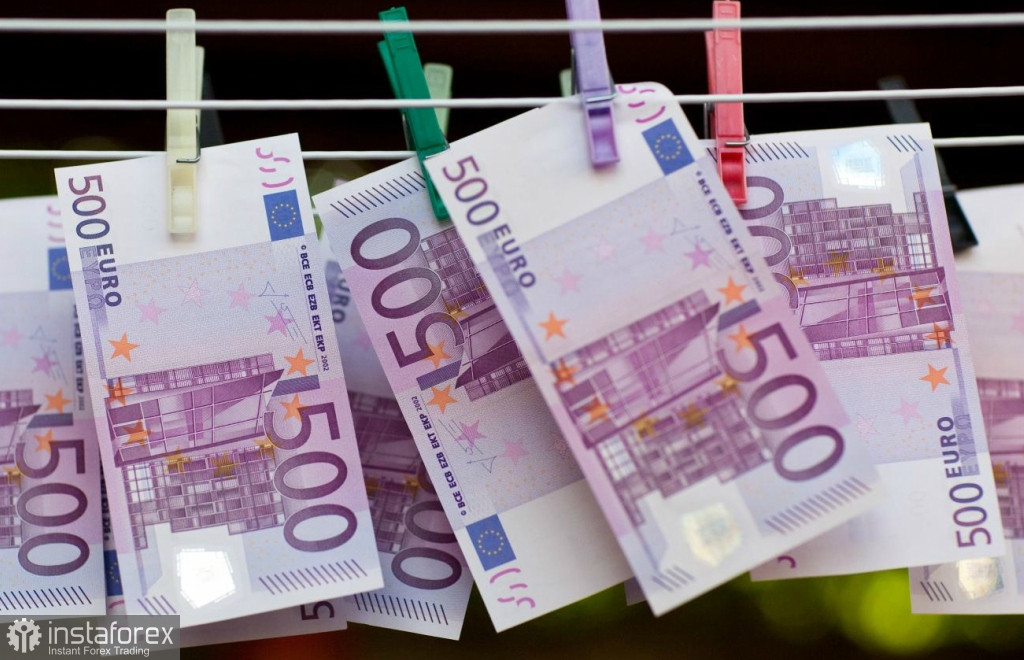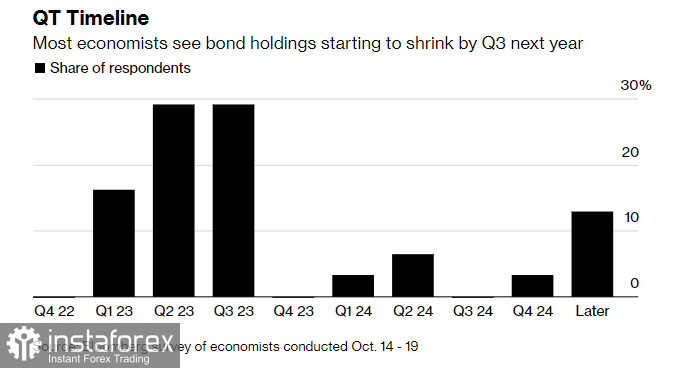As the latest survey of economists showed, the European Central Bank will act much more decisively than previously thought to curb record inflation, even though the eurozone is prone to recession.
Most likely, against this background, the European currency has managed to stay at a certain level, slightly below parity against the US dollar. For quite a long period, there were plenty of reasons for another major sell-off: starting with a decrease in the unemployment rate in the US and ending with a high level of inflation over the past 40 years.

The ECB deposit rate is expected to reach 2.5% by March next year, more than the 1.5% set in the previous forecast. This includes a 75 basis point increase on October 27 and another 50 basis point increase in December of this year. More than two-thirds of the respondents surveyed said that officials are still lagging in the fight against price increases that exceed five times the target of 2%.
The survey shows that the recession in the eurozone economy, in which 19 countries participate, will not halt the increase in interest rates. It seems that the European Central Bank has decided to follow the example of the Federal Reserve System and its speed of tightening the cost of borrowing.
The results also indicate concerns that the ECB may eventually go beyond what is acceptable, forcing it to retreat. Some economists expect that rates may be lowered as early as July next year. However, the average forecast suggests that the first reduction will occur only in 2024.
Obviously, the ECB will have to act very carefully due to the impending recession, recent market turmoil in the UK, and growing financial risks. It will be difficult to balance the determination to fight inflation with a premature reversal. But if you do not fight rising prices, this will lead to more disastrous economic consequences than a sharp increase in rates.
Many ECB officials want rates to reach the so-called neutral level, which does not stimulate or restrain the economy. It is believed that it is about 2%-before assessing how much further it is necessary to intervene in monetary policy.
In addition to the rates, a debate has unfolded about when to start reducing the balance of bonds worth 5 trillion euros that the ECB acquired during the recent crises—a process known as quantitative tightening. Most economists expect that QT will begin by the third quarter of 2023, but many do not yet see how the ECB will be able to get rid of more than 30% of its assets, which could lead to a sharp increase in bond yields of some eurozone member countries.

As for the technical picture of EURUSD, the bears actively piled on the euro and returned everything to the side channel framework observed recently. To resume growth, it is necessary to return the pair above 0.9800, which will take the trading instrument to 0.9840 and 0.9870. However, the upward prospects will depend entirely on new US data and the decisions taken by the Federal Reserve System. A break of 0.9760 will put pressure on the trading instrument and push the euro to a minimum of 0.9720, which will only worsen the situation of buyers of risky assets in the market. Having missed 0.9720, it will be possible to wait for the lows to update around 0.9680 and 0.9640.
As for the technical picture of GBPUSD, the growth and reaction to the retirement of the Truss quickly ended, which by the end of yesterday led the pound to the area of the opening level. Now buyers will focus on protecting the support of 1.1170 and the breakdown of the resistance of 1.1240, limiting the upward potential of the pair. Only a breakthrough of 1.1240 will return the prospects for recovery to the area of 1.1290, after which it will be possible to talk about a sharper jerk of the pound up to the area of 1.1330 – yesterday's maximum. It is possible to talk about the return of pressure on the trading instrument after the bears take control of 1.1170. This will blow the bulls' positions and completely negate the prospects of the bull market observed since September 28. A break of 1.1170 will push GBPUSD back to 1.1120 and 1.1070.
 English
English 
 Русский
Русский Bahasa Indonesia
Bahasa Indonesia Bahasa Malay
Bahasa Malay ไทย
ไทย Español
Español Deutsch
Deutsch Български
Български Français
Français Tiếng Việt
Tiếng Việt 中文
中文 বাংলা
বাংলা हिन्दी
हिन्दी Čeština
Čeština Українська
Українська Română
Română

